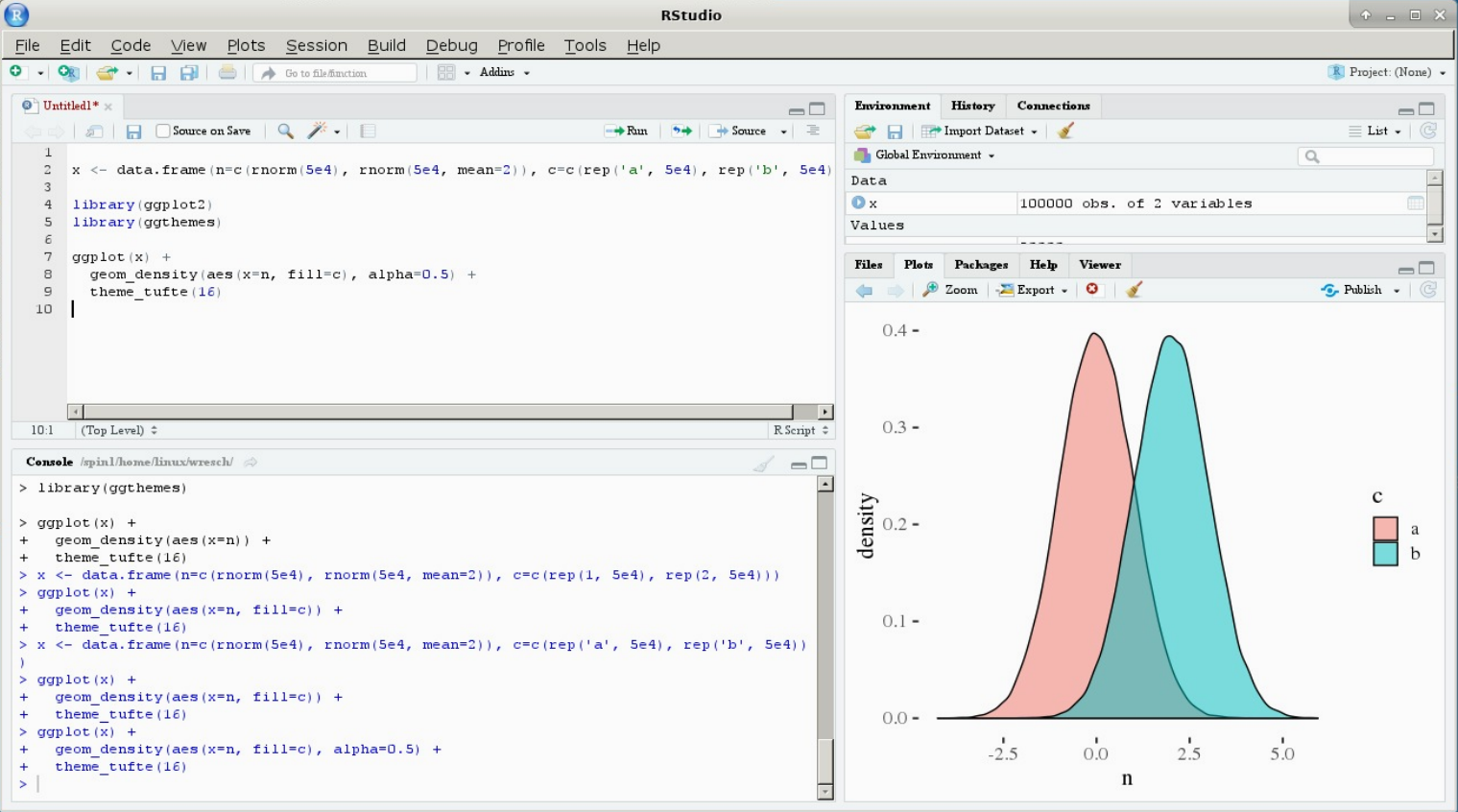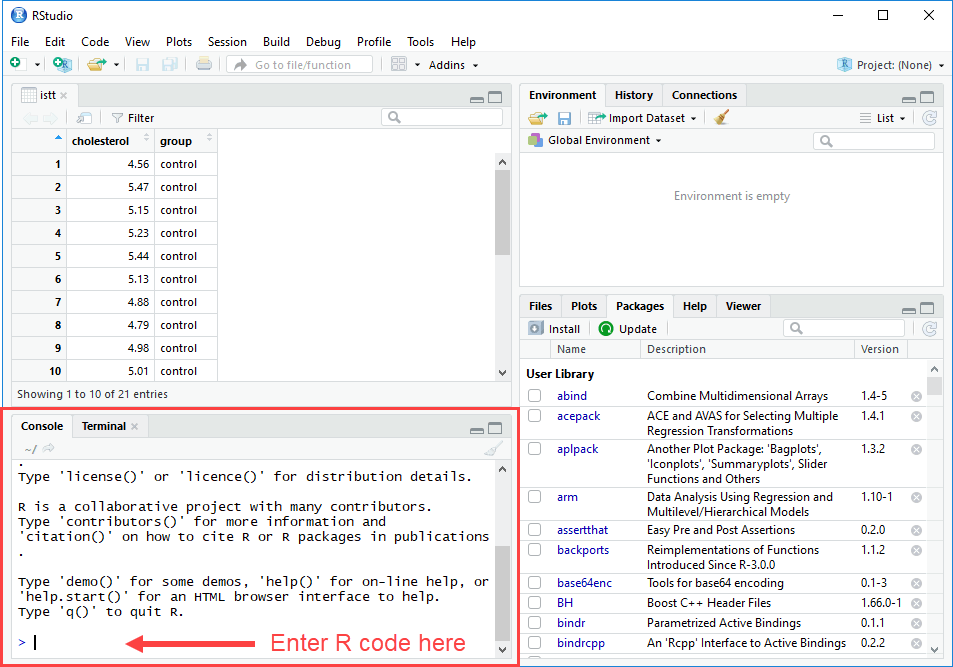
To Install R

Click on 'Download RStudio Desktop.' Click on the version recommended for your system, or the latest Windows version, and save the executable file. Run the.exe file and follow the installation instructions. To Install the SDSFoundations Package. Download SDSFoundations to your desktop (make sure it has the '.zip' extension). Turn your analyses into high quality documents, reports, presentations and dashboards with R Markdown. Use a productive notebook interface to weave together narrative text and code to produce elegantly formatted output. Back to Gallery Get Code Get Code. Shiny combines the computational power of R with the interactivity of the modern web.
RStudio daily builds. Daily builds are intended for testing purposes, and are not recommended for general use. For stable builds, please visit rstudio.com. Latest RStudio Desktop builds.
- Open an internet browser and go to www.r-project.org.
- Click the 'download R' link in the middle of the page under 'Getting Started.'
- Select a CRAN location (a mirror site) and click the corresponding link.
- Click on the 'Download R for (Mac) OS X' link at the top of the page.
- Click on the file containing the latest version of R under 'Files.'
- Save the .pkg file, double-click it to open, and follow the installation instructions.
- Now that R is installed, you need to download and install RStudio.

To Install RStudio
- Go to www.rstudio.com and click on the 'Download RStudio' button.
- Click on 'Download RStudio Desktop.'
- Click on the version recommended for your system, or the latest Mac version, save the .dmg file on your computer, double-click it to open, and then drag and drop it to your applications folder.
To Install the SDSFoundations Package
- Download SDSFoundations to your desktop (make sure it has the '.tgz' extension).
- Open RStudio.
- Click on the Packages tab in the bottom right window.
- Click 'Install.'
- Select install from 'Package Archive File.'
- Select the SDSFoundations package file from your desktop.
- Click install. You are done! You can now delete the SDSpackage file from your desktop.
To Install R:
- Open an internet browser and go to www.r-project.org.
- Click the 'download R' link in the middle of the page under 'Getting Started.'
- Select a CRAN location (a mirror site) and click the corresponding link.
- Click on the 'Download R for Windows' link at the top of the page.
- Click on the 'install R for the first time' link at the top of the page.
- Click 'Download R for Windows' and save the executable file somewhere on your computer. Run the .exe file and follow the installation instructions.
- Now that R is installed, you need to download and install RStudio.
To Install RStudio
Www.rstudio.org

- Go to www.rstudio.com and click on the 'Download RStudio' button.
- Click on 'Download RStudio Desktop.'
- Click on the version recommended for your system, or the latest Windows version, and save the executable file. Run the .exe file and follow the installation instructions.
To Install the SDSFoundations Package
- Download SDSFoundationsto your desktop (make sure it has the '.zip' extension).
- Open RStudio.
- Click on the Packages tab in the bottom right window.
- Click 'Install.'
- Select install from 'Package Archive File.'
- Select the SDSFoundations package file from your desktop.
- Click install. You are done! You can now delete the SDSpackage file from your desktop.
In How It Works, you learned that R Markdown files provide a notebook interface that makes it easy to test and iterate when writing code.
Share this experience by sharing your .Rmd file with colleagues for them to open in their RStudio IDE. Or recreate the notebook interface for non-R users by rendering your file to an HTML notebook with output: html_notebook, as in this example.
R-studio Data
R Markdown will create a nb.html version of your file: a self-contained HTML file that contains both a rendered copy of the notebook with all current chunk outputs (suitable for display on a website) and a copy of the notebook .Rmd itself.
You can view the .nb.html file in any ordinary web browser, or open it in RStudio. In this case, RStudio will extract and open the .Rmd file that underlies the nb.html file.
Version Control
R-studio Network Technician
One of the major advantages of R Notebooks compared to other notebook systems is that they are plain-text files and therefore work well with version control. We recommend checking in both the .Rmd and .nb.html files into version control so that both your source code and output are available to collaborators. However, you can choose to include only the .Rmd file (with a .gitignore that excludes the .nb.html) if you want each collaborator to work with their own private copies of the output.
R-studio Data Recovery
See R Notebooks to learn more about notebooks with R Markdown.
